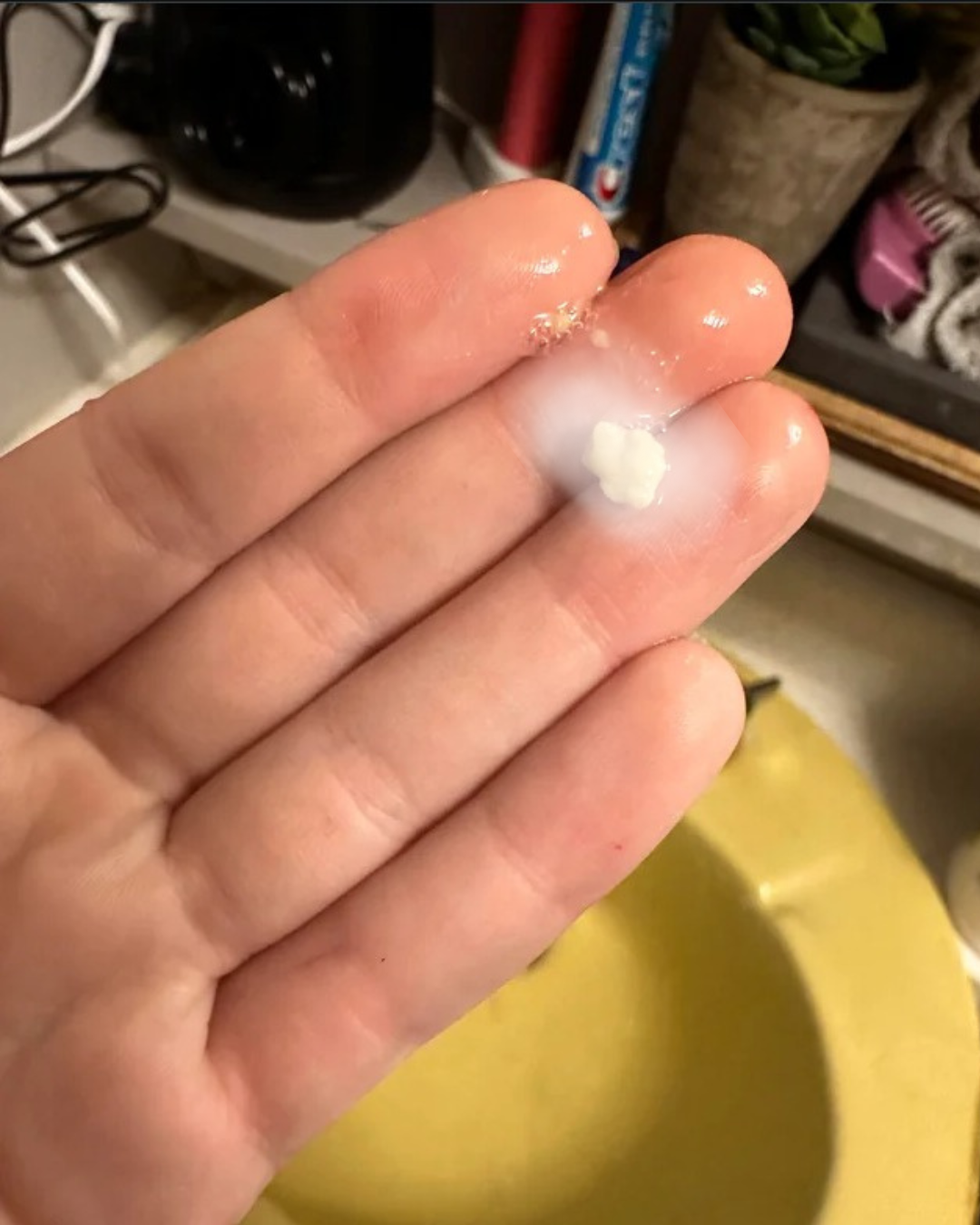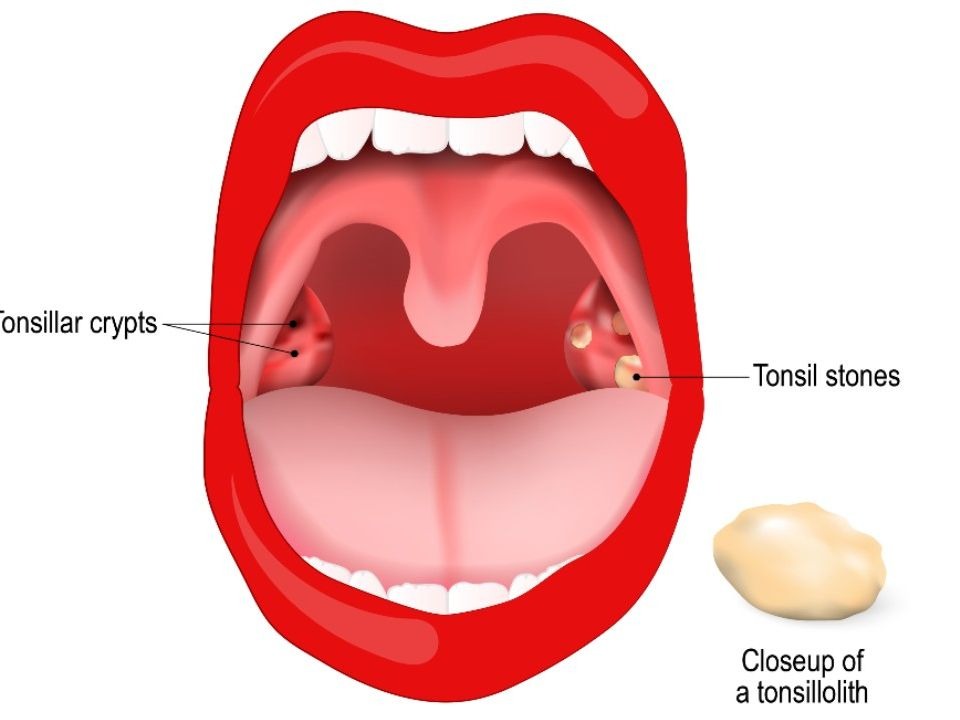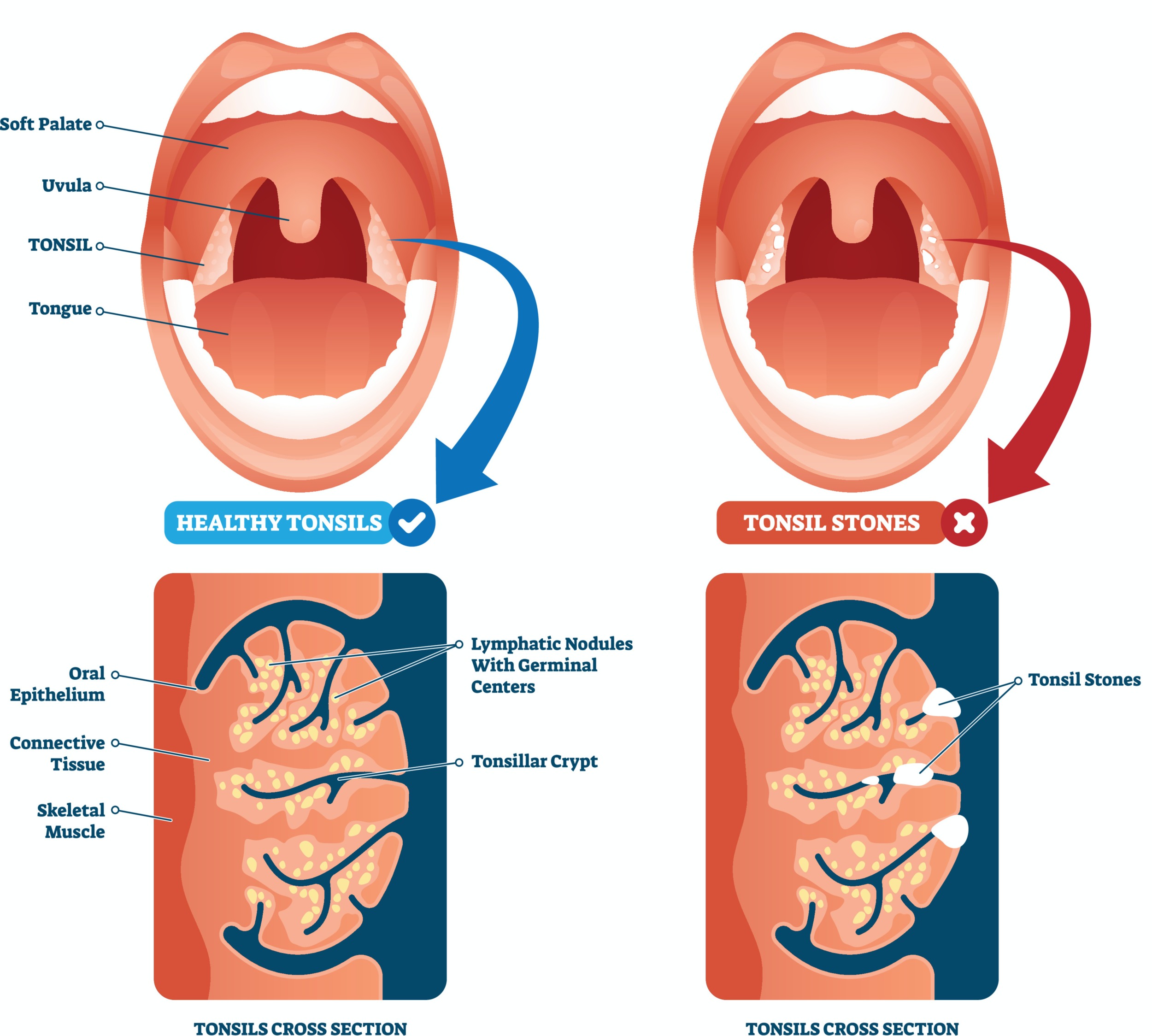
If you’ve struggled with stubborn bad breath despite brushing, flossing, and rinsing daily, the source of the problem may not be your teeth at all—it could be your tonsils.
Those small white or yellowish specks that sometimes appear at the back of your throat are called tonsil stones, or in medical terms, tonsilloliths.
At first glance, they might seem harmless—tiny spots tucked into the folds of your tonsils. But what are they really?
Tonsil stones are hardened clumps of debris: leftover food particles, dead cells, bacteria, and even minerals like calcium.
Over time, these materials collect in the small crevices (crypts) of the tonsils, eventually forming lumps with a texture often described as “cheese-like.”
Why Tonsil Stones Matter
For some, tonsil stones cause little to no trouble and may go unnoticed until spotted in the mirror. For others, they can become a recurring issue.
The most common complaint is bad breath—often described as foul, metallic, or sulfur-like. This happens because bacteria trapped inside the stones release smelly compounds.
Other possible symptoms include:
• A scratchy or sore throat
• The sensation of something stuck when swallowing
• Swollen or irritated tonsils
• Ear pain or pressure without an infection
• Persistent coughing
• Occasional tonsil infections
Studies suggest around 1 in 10 people will develop tonsil stones at some point. The good news is they sometimes dislodge or dissolve naturally, often without you even realizing it.

Diagnosing Tonsil Stones
Diagnosis is usually straightforward. In most cases, a doctor can spot them simply by examining your throat with a light. Occasionally, they are discovered by accident on dental X-rays or CT scans taken for other reasons.
How to Manage Tonsil Stones
The treatment depends on how much they bother you. Many cases can be handled at home with simple methods, while more stubborn cases may need medical attention.
Self-care techniques – Gargling with warm saltwater, coughing, or gently dislodging stones with a cotton swab. (Avoid sharp objects, which can injure the tonsils.)
Medicated rinses – Antimicrobial or oxygenating mouthwashes reduce bacteria, lowering the risk of new stones.
Oral irrigators – Devices that flush water into the tonsil crypts to wash out debris.
Surgery – In severe or recurring cases, a tonsillectomy (tonsil removal) may be recommended. Though drastic, it’s a permanent fix.
Simple tricks – Drinking fizzy drinks or coughing can sometimes help loosen smaller stones naturally.

Preventing Tonsil Stones
While you can’t change the natural shape of your tonsils—some people just have deeper crevices—you can reduce the chances of stones forming:
• Brush and floss daily to limit trapped food particles.
• Clean your tongue regularly to remove bacteria.
• Gargle with saltwater or mouthwash to keep bacteria under control.
• Manage allergies and mucus buildup, since postnasal drip can contribute to stone formation.
Final Thoughts
Tonsil stones might sound unpleasant, but for most people they’re more annoying than dangerous. Still, if you have ongoing symptoms—especially chronic bad breath or repeated infections—it’s worth seeking medical advice.
Your tonsils may be small, but they can have a surprisingly big effect on your comfort and confidence. A few preventive steps today could save you from discomfort—and some awkward social moments—tomorrow.